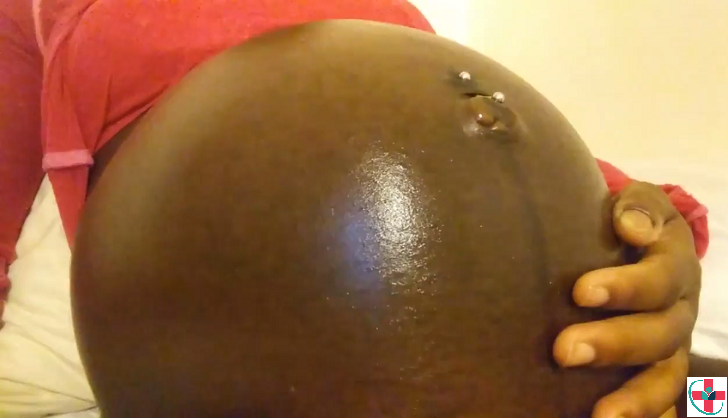Pregnancy massage - also known as the pre-natal massage - promotes relaxation and bonding, soothes nerves, and relieves a strained back and tired muscles in expectant mothers.
Is it safe to massage your bump?
As long as you use soft, gentle movements, massaging your bump is likely to be safe. We do not have any evidence that it causes any harm. Even so, just to be on the safe side, you may want to avoid massaging for the first three months of pregnancy.
From the middle of your second trimester, your baby may move in response to your touch. Feeling your baby respond to your caresses is very special and may help to deepen the bond between you and her.
Massaging your bump in later pregnancy is thought to have a range of benefits for you and your baby. It may help you to:
*Muscular discomforts such as leg cramps, muscle stiffness, tension, and knots – massage improves circulation and can, therefore, stimulate the flow of blood to these areas, easing discomfort.
*Muscular imbalance caused by postural changes – massage can help the lumbar region to regain balance and relieve discomfort.
*Sciatic pain during pregnancy can be caused by a tight buttock muscle – massage can help to relax this muscle and relieve the pain caused by the pinched nerve.
*Constipation – regular abdominal massage will encourage your bowels to move.
*Headaches and sinus pain – massage of the face, neck, and shoulders can help to alleviate sinus pressure and headaches caused by tension.
*Swelling/edema – extra pressure your uterus places on your legs can lead to swelling in your feet and ankles. Massage can improve circulation and lymph flow to the affected areas, helping to reduce swelling.
There’s even a small amount of evidence that regular massage throughout your third trimester may help to ease labor pains. One study also suggests that if your husband massages you, it may help reduce the likelihood of your baby being born early or with low birth weight.
So, starting from the second trimester onwards, you could try massaging your bump yourself. Or your husband could do so for you. Here’s a guide on how to massage your bump.
Before you begin
Firstly, choose oil or cream to help your hands glide smoothly. A gentle moisturizer containing vitamin E is a great option, as it may also help to soothe itchy skin. Or you could also try a carrier oil such as safflower oil, jojoba oil, grapeseed oil, olive oil or baby oil.
Before using any aromatherapy oils, make sure you check with your doctor. All aromatherapy oils are not safe to use during pregnancy. Even completely natural substances can be unsafe for use in pregnancy.
Before you begin your massage, shake your hands and arms to soften and relax them.
How to massage
Remember to use strokes that gently glide over your bump and mold to the contours of your body. Don’t use firm strokes directly over your bump or in your groin.
Here’s what you have to do:
- Begin at the sides of your bump and slowly move your hands into the middle. Gradually move your hands down towards your pubic bone, then along each side of your groin and back up to each side.
- Repeat this, but this time move your hands up to your breasts, along the top and back down to the sides.
- Using the flats of your hands, move across and around your bump in overlapping “c” shapes. Keep one hand in contact with your skin at all times so that it feels like a continuous stroke.
To get more out of your massage there are a couple of other things you can try:
- Take slow and relaxed breaths. You could also imagine that you and your baby are breathing together.
- As you touch your bump, imagine that you’re caressing your baby as you will after she’s born. You could also imagine that you’re floating around with your baby in a warm, soothing pool.
Involving your husband
Having your husband massage your bump is a great way to make him feel part of the pregnancy.
Though it may feel a bit awkward at first, it will allow you both some time together, and slowly you both will start looking forward to it.
It also helps your husband to form an early bond with your bump and may help you both to maintain closeness during pregnancy.
Tips to follow
After your second trimester, try not to lie flat on your back for prolonged periods. It could make you feel faint and interfere with blood flow to your baby.
Instead of lying on your back, you could try:
- Lying on your side (preferably your left), supported by pillows under your bump, behind your back and between your knees.
- Sitting upright on the bed, leaning back onto lots of pillows, with your legs crossed or out in front of you. Place some cushions under your knees to allow them to bend comfortably. Your husband can either sit to the side of you or kneel in front of you.
- Kneeling or sitting on the bed or floor with your husband behind you, with your body and hips between his legs.
Your husband can then follow the techniques described above, giving you both a wonderful moment of calm, relaxation, and bonding.
